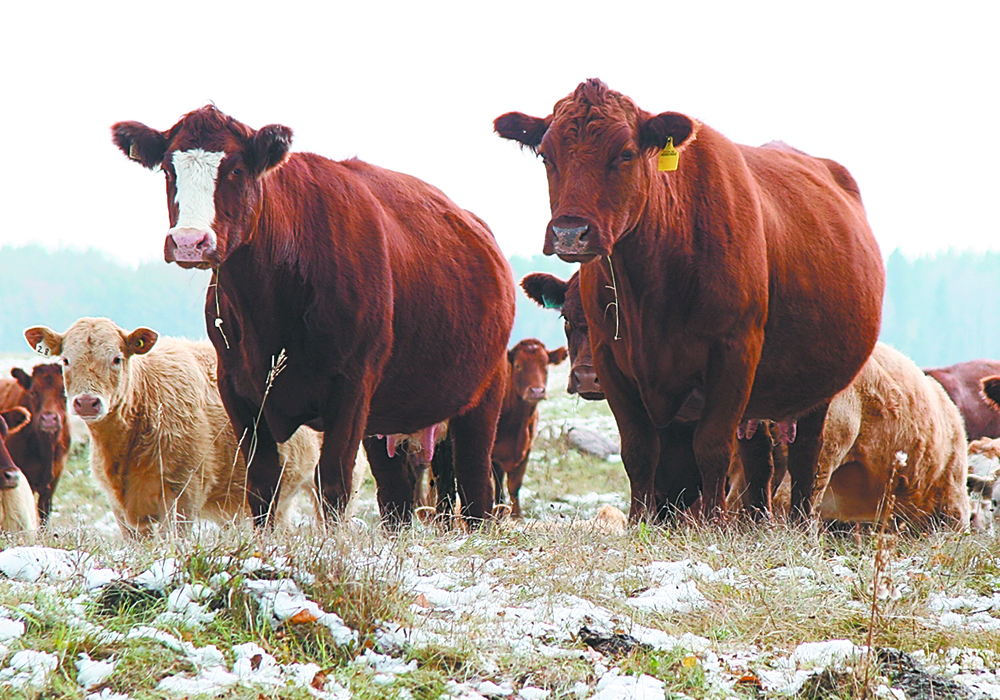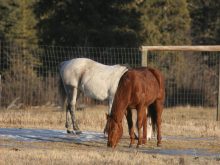There have been lots of anecdotal reports this year about exceptionally high open rates in beef cow herds at pregnancy checking time.
I’ve spoken to many producers and veterinarians across Western Canada who describe open rates of 20 percent or higher. This is distressing for anyone who experiences it, and nothing can be done now to rectify the situation.
Those cows won’t produce a calf in the upcoming calving season and although cull prices are reasonably good, it is still a major economic loss in not having those calves to market at the end of next year.
Read Also

Pork sector targets sustainability
Manitoba Pork has a new guiding document, entitled Building a Sustainable Future, outlining its sustainability goals for the years to come.
Why is this occurring? There are undoubtedly multiple factors at play, and we know reproductive rates can be affected by body condition, trace mineral deficiencies, bull performance, infectious diseases, breeding schedules and many others.
However, we have seen multiple years of drought in many parts of Western Canada, and this has undoubtedly had a major influence on the nutritional status of many cow herds.
I often ask myself whether we could have seen this coming sooner and intervened in some fashion to prevent it. In some cases, it’s not possible, but I believe the decline in fertility has been occurring over several years and is now becoming evident in the open rates.
Instead of focusing on pregnancy rates or open rates, it might be more prudent to pay attention to calving distribution. I’m sure there are producers who pay attention to this, but I’m also confident that many focus only on pregnancy rate or even the percentage of cows who successfully calve.
Why is a calving distribution so important? Calving is the only easily accessible reproductive event in a cow-calf herd. In most herds, unless we are using artificial insemination, we don’t know the exact breeding dates for each cow. Calving date is the only reproductive event that is easy to track.
However, we know other reproductive events, such as when a cow comes into heat and when she gets bred, are highly related to the date on which she calves.
To create a calving distribution, count the cows that have calved during the first 21 days of the calving season. I use the third cow that calves in her breeding group as the trigger date for the start of the calving season.
Divide this number by the total number of cows that calve in the calving season and multiply by 100 to get the percentage of cows calving in the first 21 days. Repeat this process for each of the next two 21-day periods to calculate the percentage of cows that are calving in each period of the season.
The goal is to have at least 65 percent of the herd calving in the first 21-day period. These cows were probably cycling at the start of the breeding season and were bred in the first 21 days. These cows are also more likely to cycle at the start of the next breeding season and will be more likely to get pregnant in the following year, provided the cows are in good body condition and on a good plane of nutrition.
I suspect that over the last few years of less-than-ideal moisture conditions, we might have seen a gradual change in calving distribution that didn’t show up in our open rates until this year. The first year of poor forage production might have put cows in less-than-ideal body condition so they took longer to return to estrus during the breeding season.
As a result, more cows calved a little later. The pregnancy rates were still OK, but now there are more cows calving later.
The next year, the problem may have been compounded again and eventually, as the cows move later into the calving window, they have less time to recycle and are eventually more likely to not become pregnant. Thus, higher open rates.
Reproduction is one of the most important economic indicators of success in a cow-calf operation. However, focusing only on open rates may not give the entire picture.
There are lots of reasons to try and achieve the goal of having 65 percent of the cow herd calve in the first 21 days of the calving period. Cows that calve then will wean heavier calves at the end of the year. Each extra 21-day period before weaning can result in nearly 39 pounds of extra weaning weight for calves born in this period.
The Beef Cattle Research Council has an excellent calculator on its website to asses this. Heifer calves born in the first 21 days that are retained as replacements are heavier and more likely to cycle as yearlings.
Having a large proportion of calves born in the first 21-day period also creates a more uniform calf crop, which is a marketing advantage and simplifies other management procedures because calves are similar in age.
This year, during calving season, I encourage you to consider tracking the calving distribution. It will provide more information than simply evaluating open rates.
If you use multi-sire breeding pastures, you could also utilize parentage testing to determine which sires are more likely to sire calves born in the first 21 days. That information can provide valuable information about the sires in your herd.
John Campbell is a professor in the department of Large Animal Clinical Sciences at the University of Saskatchewan’s Western College of Veterinary Medicine.















